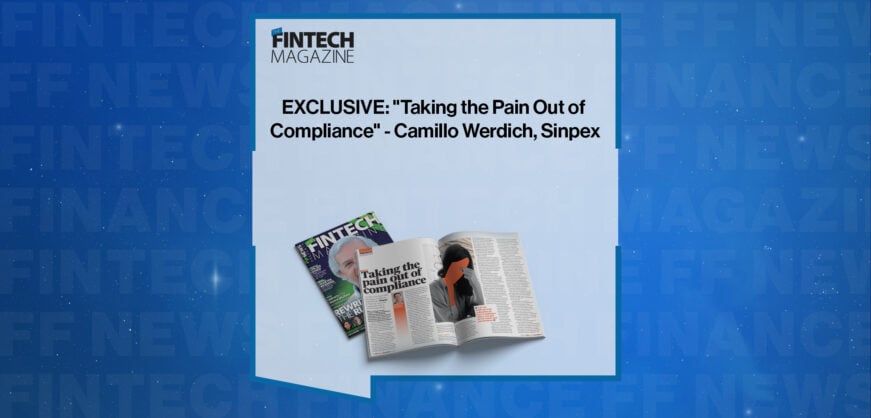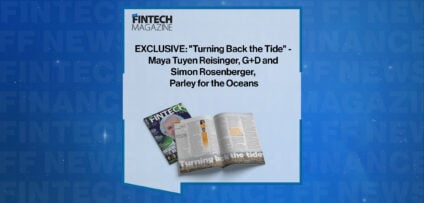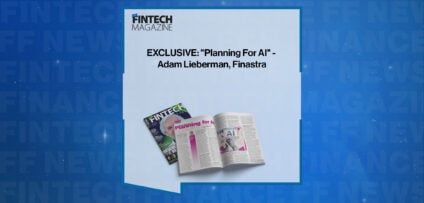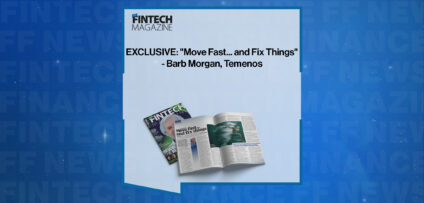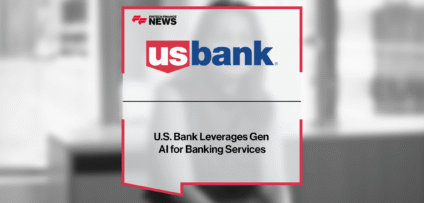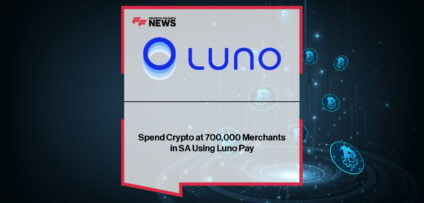Breaking News

EXCLUSIVE: “From Plastic to Progress: Can Card Recycling Help Banks Go Green?” – Maya Reisinger, G+D and Joe Pitcher, Mastercard in ‘The Fintech Magazine’
Maya Reisinger from G+D and Mastercard’s Joe Pitcher explore sustainable solutions for the price of our payment habits
As of the end of 2023, there were 17.45 billion credit, debit, and prepaid cards in circulation worldwide. And they aren’t going away any time soon– many are plastic and will remain in the environment long after their expiry date.
It’s a key consideration for banks who need to balance the need for functionality with moral, market and regulatory pressure for sustainability. According to a report by Deloitte, 61 per cent of consumers are reducing their use of plastics. Additionally, a recent survey in North America revealed that 65 per cent of consumers prefer to purchase from purpose-driven brands with green credentials.
While it’s uncertain if they will act on these preferences, customer-facing banks cannot ignore this growing desire. Giesecke and Devrient (G+D) is one security tech company helping banks address the problem. Maya Reisinger is Product Management Director of the Convego Beyond eco portfolio at G+D and closely involved in its efforts to deliver sustainable products.
“Every year, a significant number of plastic cards become obsolete. We want to take responsibility and find sustainable ways to prevent them from ending up in the environment,” she says. “That’s why G+D is collaborating with banks to recycle expired payment cards.”
In her experience, some banks are primarily concerned with meeting their ESG commitments but are not very good at communicating their sustainability policies in their marketing efforts. Others, she says, use card recycling as a way of communicating and engaging with cardholders.
Joe Pitcher is Chair of the Greener Payments Partnership and Vice President of the Sustainable Cards Programme at Mastercard, one of the world’s largest payments technology companies with more than 150 million acceptance locations, thousands of banking partners and other customers, and consumers and businesses that carry more than 3.4 billion cards. He’s definitely hoping to re-educate customers and banks that ‘there can be a better way’.
“Just removing plastic cards isn’t going to solve all of the environmental challenges the world faces. But it shows customers that we’re taking these problems seriously “
“We’re looking to divert expired cards from their current end of life, which is landfill,” he says. “Card recycling is not an ideal solution, especially given most cards are typically made out of PVC, which isn’t the easiest or most widely recycled plastic, but it’s a step in the right direction. It’s the first part of re-focussing on a better way forward.”
Recycling partnerships
The imperative is clear. According to the United Nations, the equivalent of 2,000 garbage trucks full of plastic are dumped into the world’s oceans, rivers, and lakes, every day. Even when not directly disposed of, it’s estimated that each year, 19-23 million tons of plastic waste leaks into aquatic ecosystems. Cards, while individually small, play a substantial part in that.
“An average payment card contains about five grams of plastic. It’s not a lot but if you think there are tens of billions of different cards around the world, if we can collect and recycle even a billion of those, that’s five million kilos of plastic waste we can remove from the environment,” says Pitcher.
G+D is putting this theory into practice through a card-recycling programme in partnership with Santander bank in Spain.
“We’ve collected more than a million payment cards, equivalent to roughly 5.6 tons of plastic,” says Reisinger. “We recycled the plastic into new products. In this case, we produced urban benches, which are being donated to communities.”
Santander, meanwhile, contacts the Cardholders, thanking them for recycling and telling them what happens once they have handed in their cards.
“We can scale this to other clients and that’s what we hope to do,” says Reisinger. “And we will see a bigger impact. Billions of cards every year are thrown in the garbage bin, which we could take back and turn into something useful.”
The Santander project is so far estimated to have saved 360 tons of CO2 by avoiding newly-manufactured material being produced – not huge, but not insignificant.
“It’s a symbol,” says Reisinger. “Just removing plastic cards or reducing plastic waste isn’t going to solve all of the environmental challenges the world faces. But it signals intent and shows to the bank’s customers that we’re taking these problems seriously.”
Similar to G+D’s partnership with Santander, Mastercard is working with HSBC UK to facilitate a way for customers to dispose of obsolete bank cards at a select number of local branches, using a self-service secure return unit.
“We keep [the] cost as low as possible, so it isn’t the barrier that stops banks participating “
“They place their card into the unit and it completely shreds it into about 300 pieces,” says Pitcher. “So you get rid of any concerns around fraud or data integrity. That unit stores the waste until a sufficient volume has been collected. The shredded cards are then collected and taken for recycling.
“Any bank in the UK that wants to recycle cards can join the programme now.”
But there are challenges to recycling, as Reisinger explains: “In Europe, there is quite a lot of expertise in recycling and we see many partners who are willing to recycle PVC, which is the main material for payment cards. But capabilities around sorting and separating materials differ from region to region.”
And many banks simply don’t know where to start with it all.
“They don’t have the expertise in card recycling, so we’ve tried to help by finding the experts and partnering – with TerraCycle for example,” says Pitcher. “Then we can help banks with the details of transportation, shredding, and processing “By inviting different banks to join a single programme, we’re also trying to overcome the scale and cost barrier. The solution isn’t free – although it’s not a revenue earner for Mastercard in any way, there is a service to be paid for. By working together, we keep that cost as low as possible so it isn’t the barrier that stops banks participating.”
Reisinger adds: “What makes it difficult for banks is finding resources internally to drive a project that isn’t their main focus. And often they don’t have recycling partners in their network so they’re really starting from scratch. Collaborating with someone like G+D helps them get one step further without spending precious resources on developing and inventing things from scratch.
“We work with several banks and several partners across different geographies. So we can build this expertise and leverage it across different regions, thereby gaining the economies of scale.”
At G+D, end-of-life processes for cards is having a major impact on the materials it now uses to develop new products. “It’s changed G+D as a company,” says Reisinger.
Mastercard, too, has gone on a significant journey. It will have eliminated first-use PVC from its cards by 2028 and given its issuers the option to have cards made from recycled or bio-sourced materials. It’s a major step by an influential card scheme.
There is a sense from both Pitcher and Reisinger that a shared focus is needed. Even if they are working on different projects, contributing to a more widely accepted process is going to make it more accessible for larger organisations.
“If we all work together and drive card Volumes down a single stream, we can drive down costs,” says Pitcher. “What we’re trying to do is make a very simple solution so that everybody understands what they need to do.”
It’s a start at least, and it’s shaping the card supply chain’s entire approach to environmental issues.
“You can only achieve Net Zero by addressing all possible acts,” concludes Pitcher. “If we leave some of these things, thinking they’re too small – it’s only a five-gramme card, who cares? – we’re never going to get to the end game that we need to. So it’s about us working together to show, as an industry, this is what we want to achieve.”
This article was published in The Fintech Magazine Issue #35, Page 12-13
- EXCLUSIVE: “Taking the Pain Out of Compliance” – Camillo Werdich, Sinpex in ‘The Fintech Magazine’ Read more
- Global Tech Leaders Unite to Propel Emerging Future-Critical Sectors at GITEX GLOBAL 2025 Read more
- U.S. Bank Leverages Gen AI for Banking Services Read more
- Two Thirds of Millennial Travellers Say Flexible Payments Are Their Deciding Factor When Choosing Airlines Read more
- Big Issue Partners With fumopay To Roll Out New Way for Vendors To Take Cashless Payments via Open Banking Read more








